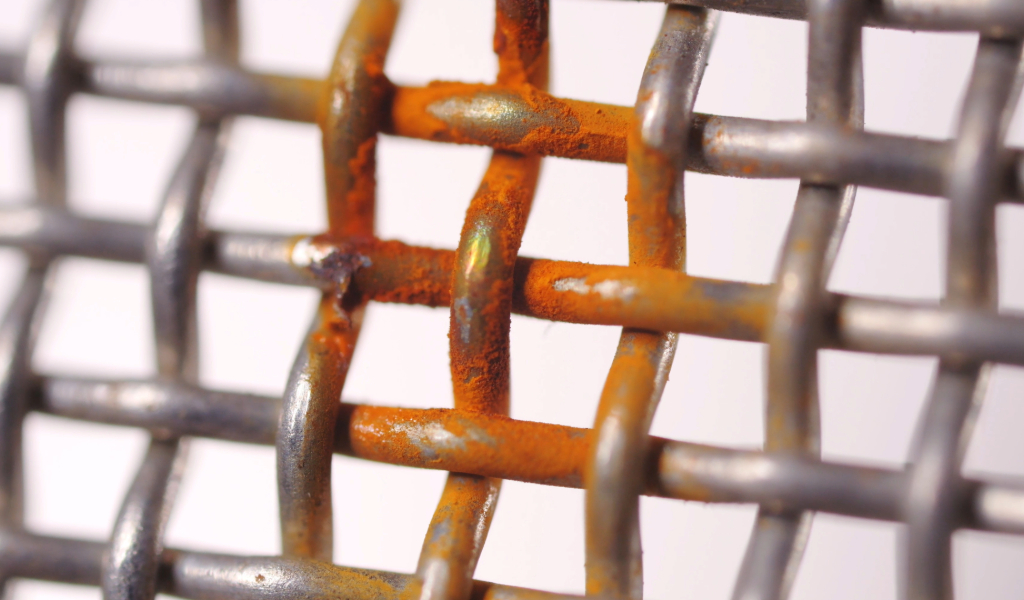How to Deal With Reoccurring Corrosion in Hot Gas Filtration Systems
In high-temperature industrial environments, hot gas filtration systems are exposed to a volatile mix of heat, moisture, and chemically aggressive gases. Over time, this exposure can lead to persistent corrosion that compromises both the structural integrity and operational efficiency of the system. For plant operators, this means more frequent maintenance, unplanned standstills, and rising operational costs. The pain point is clear: corrosion isn’t just a nuisance, it’s a recurring threat that can derail production and regulatory compliance.
Fortunately, there are proven strategies to mitigate corrosion and extend the life of your filtration system. From selecting the right materials to optimizing system design and operating conditions, understanding the root causes of corrosion is the first step toward a more reliable and cost-effective solution. By addressing the specific mechanisms behind corrosion, facilities can proactively prevent damage and maintain consistent performance.
At W.S. Tyler, we believe in creating cleaner and safer industrial environments through precision-engineered woven wire mesh solutions. With over 150 years of filtration expertise, we’re committed to helping you overcome your corrosion challenges with confidence and clarity.
In this article, we’ll explore the types of corrosion most common in hot gas filtration, the side effects that impact performance and emissions, and the material solutions best suited to withstand corrosive conditions. By the end, you’ll have a clearer understanding of how to protect your system and maintain long-term reliability.
What Corrosion Looks Like in High-Temperature Filtration Systems
Hot gas filtration systems operate in environments where temperatures often exceed 500°C (932°F), exposing metal components to aggressive chemical reactions. These reactions are driven by a mix of oxygen, sulfur compounds, halides, and moisture, which together create ideal conditions for corrosion.
The most common types of corrosion in these systems include acid point corrosion, oxidation, pitting, crevice corrosion, and galvanic corrosion. Each form has distinct characteristics and damage profiles, but all share the potential to compromise filter integrity and system performance.
Acid dew point corrosion occurs when hot flue gases cool below their dew point that is typically between 120°C and 180°C (248°F to 356°), which causes acidic compounds to condense into liquid acids. These acids aggressively attack exposed metal surfaces, especially carbon steels and lower grade alloys.
Oxidation, on the other hand, results from prolonged exposure to high-temperature oxygen, forming oxide scales. While some stainless steels can form protective layers, thermal cycling often causes these layers to spall, exposing fresh metal and accelerating degradation.
Looking to learn more about the potential energy cost losses due to inefficiencies in your hot gas filtration system? Check out our article below to discover more:
Pitting and crevice corrosion are localized forms of attack that occur in areas where particles or moisture accumulates, such as around seals, joints, or under deposits. These microenvironments foster aggressive chemistry that can perforate filter media or cause leaks. Galvanic corrosion arises when dissimilar metals are in electrical contact within a corrosive environment, such as between filter end caps and tube sheets, leading to accelerated corrosion of the less noble metal.
Understanding these corrosion mechanisms is essential for diagnosing system failures and implementing effective mitigation strategies. Each type of corrosion not only affects the physical structure of the filter system but also influences operational parameters like pressure drop, filtration efficiency, and emissions control.
By identifying the specific corrosion types present, operators can better tailor their maintenance schedules and material choices to extend system life and improve reliability.
How Corrosion Disrupts Filter Performance and Plant Operations
Corrosion in hot gas filtration systems is far more than a cosmetic issue, as it directly impacts both structural integrity and operational efficiency. As metallic surfaces degrade, filter housings, tube sheets, and support cages lose thickness and strength, increasing the risk of cracks, pinholes, and catastrophic failures under pressure.
These structural weaknesses compromise airtight seals, allowing unfiltered gas to bypass the filtration stage. This not only jeopardizes emissions compliance but can also expose your downstream equipment to abrasive particulates, accelerating wear and tear.
Operationally, corrosion often manifests as a gradual increase in differential pressure. Corroded surfaces become rough and trap particles more readily, reducing airflow and forcing fans to work harder to maintain throughput. This added resistance can lead to a higher energy consumption and reduced system efficiency. In severe cases, sudden spikes in differential pressure may indicate ruptured filter media or failed seals, triggering emergency shutdowns and expensive unplanned maintenance.
Beyond airflow issues, corrosion can cause particulate breakthrough when filter elements allow contaminants to escape. This scenario can result in violations of environmental permits and potential fines. For industries operating under strict emissions regulations, such as waste-to-energy or chemical processing, means that these failures can halt production entirely until corrective measures are implemented. The financial impact includes not only repair costs but also lost revenue from downtime and reputational damage.
Ultimately, corrosion accelerates maintenance cycles and shortens component lifespan, eroding plant reliability and profitability. Without proactive measures, operators face a vicious cycle of frequent replacements, rising operational costs, and diminished system performance. Understanding these consequences underscores the importance of selecting corrosion resistant materials and implementing preventative strategies early in the design and operation phases.
Choosing the Right Materials to Combat Corrosion
When it comes to mitigating corrosion in hot gas filtration systems, material selection is one of the most effective strategies. The right alloys and filter media can significantly extend service life and rescue maintenance costs. For general high-temperature service, austenitic stainless steels such as 304L and 316L remain popular choices. These grades offer good oxidation resistance and moderate protection against acidic condensates, making them suitable for many industrial applications.
However, their performance diminishes in environments with persistent acid dew point corrosion or chloride-rich conditions.
For more aggressive environments such as waste-to-energy plants or processes involving high sulfur content, nickel-based superalloys like Inconel provide superior protection. Inconel’s high nickel and chromium enables it to resist oxidation, scaling, and acid attack at temperatures exceeding 1,000°C (1,832°F). It also excels in resisting pitting and crevice corrosion, which are common in localized moisture zones. While Inconel comes with a higher upfront cost compared to stainless steel, its durability and resistance to extreme conditions often justify the investment for critical applications.
In areas where acidic condensates are persistent and temperatures fluctuate, Hastelloy alloys offer another level of defense. These nickel-chromium-molybdenum alloys are engineered for exceptional resistance to hydrochloric, sulfuric, and phosphoric acids, as well as chloride-induced stress corrosion cracking. Hastelloy components are often used in inlet manifolds or lower housing sections where condensation tends to occur first.
Their ability to maintain mechanical strength at elevated temperatures makes them ideal for high-stress environments.
For filter elements themselves, woven wire stainless steel mesh remains a preferred solution. This design combines high-temperature stability with corrosion resistance while allowing for back-pulse cleaning to maintain efficiency. In extreme cases, ceramic composites may be employed for their ability to withstand both thermal shock and aggressive chemical attack.
By carefully matching material properties to the specific corrosion mechanisms present in your system, you can dramatically improve reliability and reduce lifecycle costs.
Corrosion Control Starts with the Right Materials and Design
Corrosion in hot gas filtration systems is a persistent challenge that can quickly escalate into expensive maintenance and compliance issues. As we’ve discussed, the combination of high temperatures, aggressive gas chemistry, and moisture creates an environment where corrosion thrives.
Ignoring these factors often leads to structural failures, increased differential pressure, and particulate breakthrough, which are issues that can compromise both performance and profitability.
This is an issue that doesn’t have to dictate your maintenance schedule. By selecting the right materials, such as high-grade stainless steels, Inconel, Hastelloy, or even ceramic composites, you can significantly reduce the risk of recurring corrosion. This is especially true by also making sure that you implement design strategies that minimize cold spots and condensation as well. These proactive measures not only extend component life but also stabilize system performance under demanding conditions.
At W.S. Tyler, our mission is to deliver cleaner and safer industrial environments through innovative woven wire mesh solutions backed by over 150 years of expertise. We understand the complexities of hot gas filtration and are committed to helping you engineer systems that withstand the harshest operating conditions.
Ready to take the next step in protecting your filtration system? Discover our blog article on managing the extreme temperatures of hot gas filtration below:
About Dylan Polz
Dylan is a Content Writer with 2 years of experience in marketing and SEO. Passionate about learning and strengthening his writing skills, he is currently expanding his expertise in particle analysis and woven wire mesh technologies. With a strong belief in the power of information to drive positive change, his goal is to develop content that supports cleaner, safer solutions across all industries.



